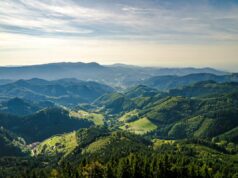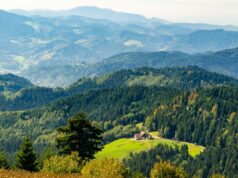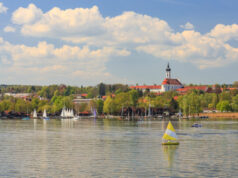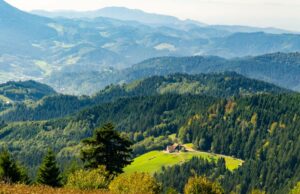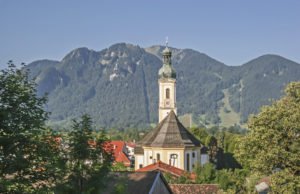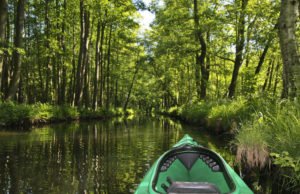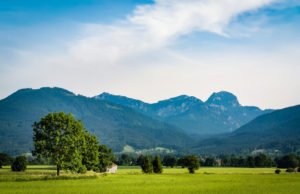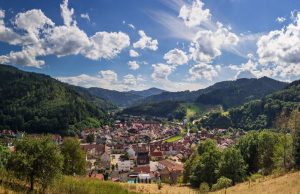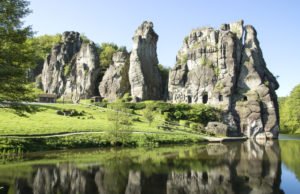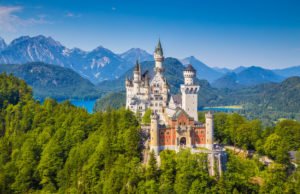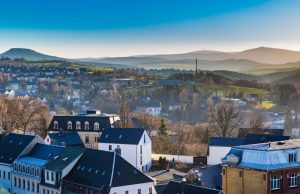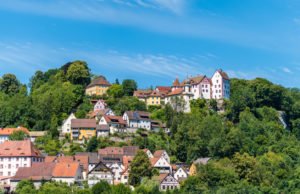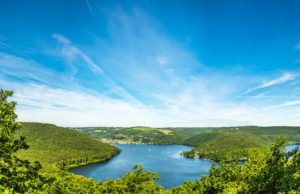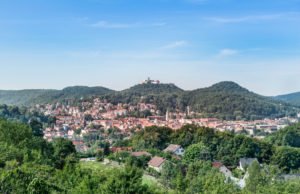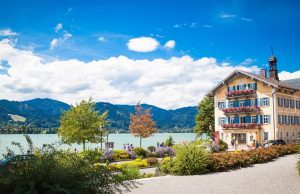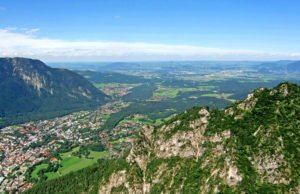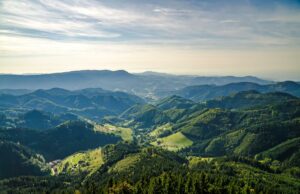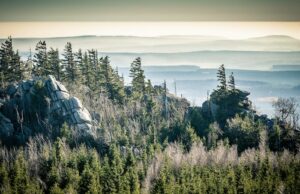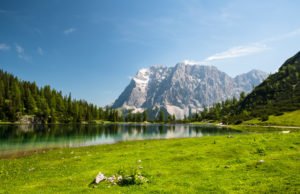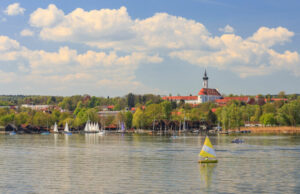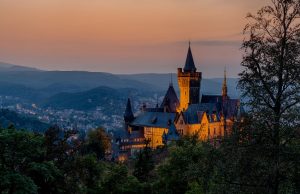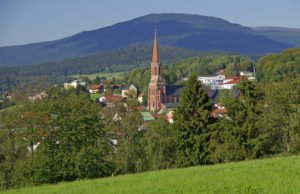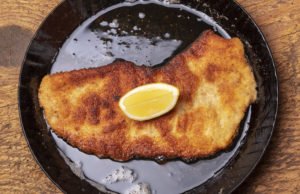
The densely wooded Teutoburg deciduous forest area, the sight of a famous German victory against the Romans in 9AD, is located in Lower Saxony and North Rhine-Westphalia. Today, the area is a magnet for holiday makers and pleasure seekers of all kinds.
The forest, which stretches out over a number of hills broken by the Bielefeld Pass, is split into two national park areas. Two-thirds of the forest lies in the TERRA Vita in the North; the remaining third in the Egge Hill Park in the south. The highest point of elevation in the north is Dorenberg at 331m lying near Bad Iburg; whilst Vemestot near Horn-Bad Meinberg is the highest south point at 465m.
The area covered by the forest has been populated for over a thousand years and there are many picturesque little hamlets, villages and small towns to visit. In particular, this part of Germany is well known for its spas and warm springs with these features being represented in place names, such as Bad Lippspringe. Three cities are within reasonable proximity of Teutoburg Forest; Paderborn to the south, Osnabruck to the North and Bielefeld to the north-east. The area is served by many small rivers with the source of the largest, the River Ems, located at the south-western point of the forest.
What to See
There is much to see in Teutoburg Forest. Big skies and pure air make the area perfect for recharging the batteries and getting out into nature. Hiking is a major pursuit for young and old alike and not surprisingly there are many popular routes to suit all abilities, which are endorsed by the German Hiking Association. Cycling too is popular, with some very scenic long-distance tours taking in both the urban and rural landscapes.
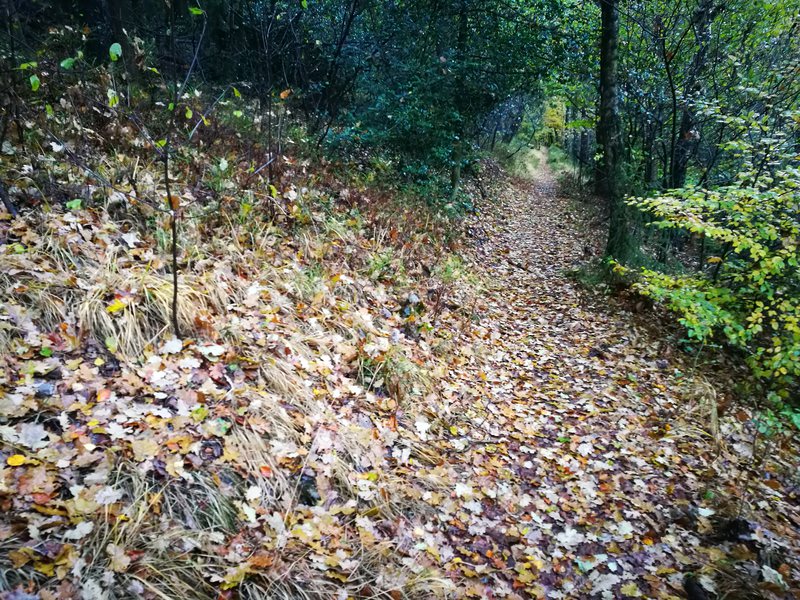
This part of Germany is well-served by rivers and professional guides organise canoeing expeditions of varying lengths on the Werner, Weser and other waterways. There is plenty to occupy young families, such as a visit to the Kleinenbremen Exhibition Mine, or the Iron Ore Mine at Porta Westfalicia, where it is possible to go deep underground. The open air museum in Detmold is all about delving back into the past, visiting the old cottages and workshops to see how people in this locale lived in the past. The North Rhine-Westphalia region is steeped in culture with a rich heritage of concert halls, inspirational churches, including the cathedrals at Cologne and Aachen and palaces such as Augustusburg. The small towns and villages close to the forest offer up a wealth of interesting experiences.
The Museum for Contemporary Art and Design can be found in Herford, famous also for its Easter Fair and the jazz festival held each May. Bad Lippspringe was a Templar stronghold and more recently, with its saline waters at a temperature of 21 centigrade, a haven for Nineteenth Century health seekers.
Other features of the Teutoburg forest include a feature known as Externsteine, comprising columns of sandstone rock seemingly rising out of the ground near Horn-Bad Meinberg. Arminius, the visitor of that famous battle, is commemorated with a monument, Hermannsdenkmal, sited on a hill near Detmold.
The Altenbeken Railway Viaduct at 1,581ft is the longest limestone railway bridge in Europe. Standing at a height of 115ft, it played a major role in the early history of the German railway.
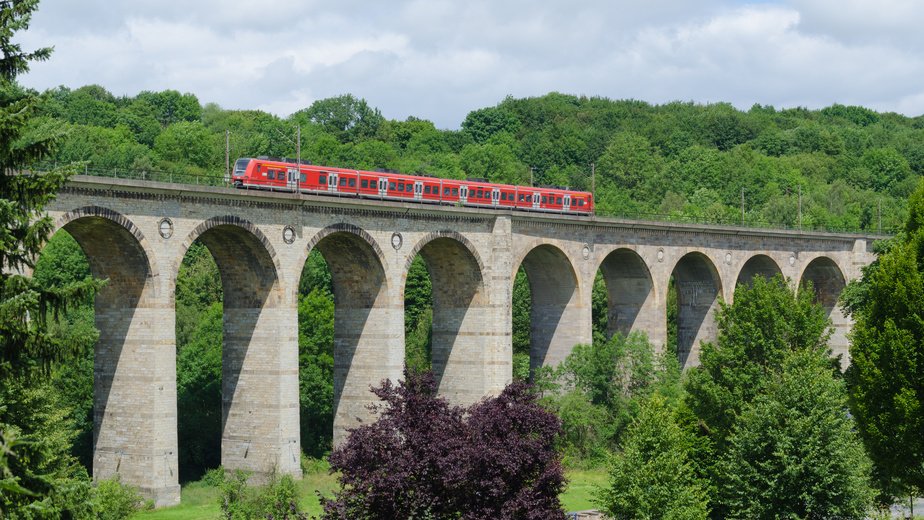
Best Time to Go
Teutoberg Forest is a great place to visit all year round, whether you are targeting a particular fair, on holiday or looking for those crisp winter’s days you can spend browsing Christmas Markets, there is something for you. The climate is temperate, mild winters and warm summers with the coldest month being January and the warmest July. Precipitation is steady all year and generally slightly heavier in Westphalia.
Regional Food
The cuisine in this part of Germany is diverse. Some German staples feature alongside robust regional fare. Food can be delicate too. Lower Saxony has long been known for its asparagus growing (there is even a museum of asparagus at Nienburg). Asparagus eaten with boiled potatoes, locally sourced ham and Hollandaise sauce is a particular favourite.
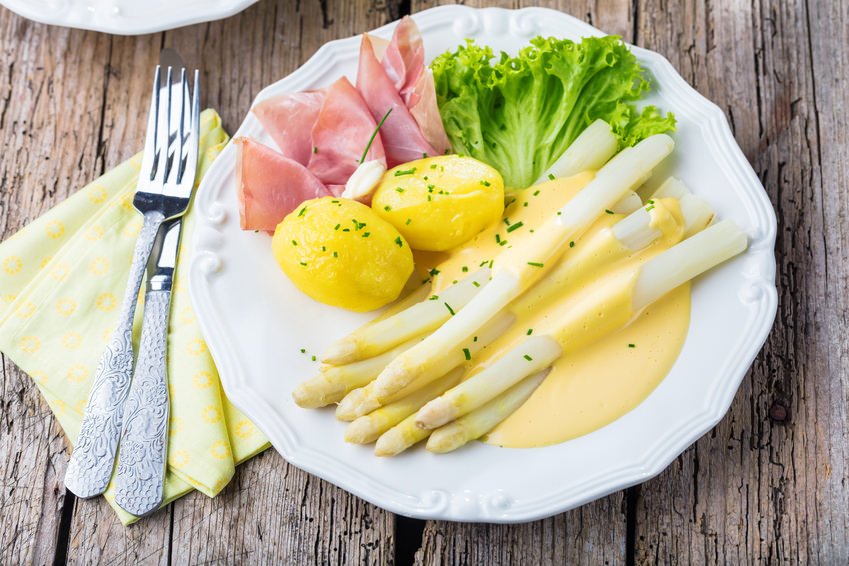
Potatoes feature quite heavily and are often eaten with Grunkohl (kale), another favoured vegetable or mixed with eggs and flour and fried or baked as Pickert, a potato cake style dish, served usually with raisins incorporated.
Westphalia is also famous for pumpernickel bread made from a sourdough starter and sweetened ground rye.
Where to Stay
Teutoberg Forest attracts almost two million visitors each year and so all kinds of accommodation is available ranging from large hotels in the cities to small rural bed and breakfast establishments. If you want to get as close to nature as possible then why not rent a chalet or cottage in the heart of the forest itself. Bed and breakfast can be purchased fairly cheaply from approximately €50 per night. Hotel rooms range in price from around €50 to over €100 per night. Chalets and lodges vary greatly depending on location, length of stay and level of comfort afforded. Much of the hotel accommodation is to be found in the cities of Osnabruck, Bielefeld and Paderborn and here international chains such as, Great Western, Ibis and Welcome are well represented alongside smaller chains and local independent establishments.
Transport
A range of transport options make getting in, out and around the region easy for visitors. Road access to this area of Germany is usually via the A2, A33 and A44 Autobahns. The three cities featured above all have railways stations on the Hamm-Minder line, part of the German high-speed system. There are several airports serving the region, Munster-Osnabruck International, Hanover and a smaller airport at Paderborn-Lippstadt. All areas are well-served by local bus companies.
Shopping and Nightlife
Whilst every small town and village has shops catering both for the indigenous population and visitors selling quality products ranging from delicious comestibles to interesting locally made souvenirs, serious shoppers will want to visit the cities. Similarly with the nightlife. Whilst, there are many great bars and eateries to be found if you are looking for clubs and other major forms of evening entertainment, such as the theatre, then the city is where you need to be. All the cities have late night clubs in addition to great bars and restaurants. There is even an Irish pub, Fiddlers, in Paderborn.
Nearby
Paderborn
A largely pedestrianised centre makes shopping in the department stores, independent boutiques and thrice weekly market held in front of the cathedral a real pleasure. Every Friday at the Paper Palaver Market the sale of organic and wholefood produce takes place, drawing crowds from near and far.
Osnabruck
Krahnstrasse is home to some of the best confectionary shops in Germany, many specialising in Himmlische, the delicious local praline. Osnabruck offers seven different shopping quarters, including the pedestrianised Johannistrausse, Her Tor, the old town famous for Christmas Markets, wine and food festivals and exclusive designer shops around the Grosse Strasse/GeorgeStrasse areas.
Bielefeld
Visitors to Bielefeld can chose which of the six shopping arcades they wish to concentrate their shopping on. Like Osnabruck and Padeborn, Bielefeld offers the visitor an eclectic shopping experience.
Finally
Whether in summer, winter, spring or fall the Teutoburg Forest is a fantastic place to visit all year round. Whether you are seeking the curative properties a quaint spa town has to offer, get out in the open air, explore local history or search out that authentic German food experience there is something for singles, couples or families alike. Whatever you are looking for, you will find it here and in abundance.


